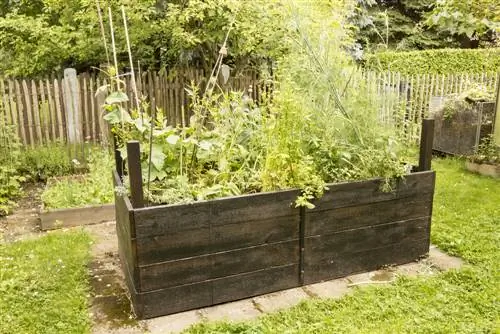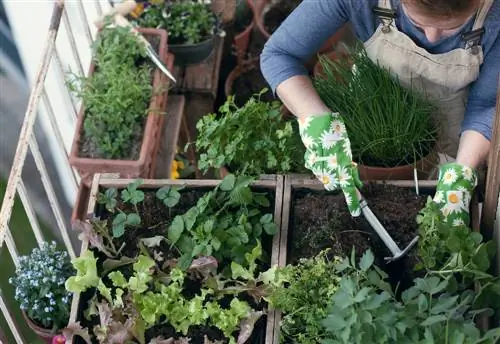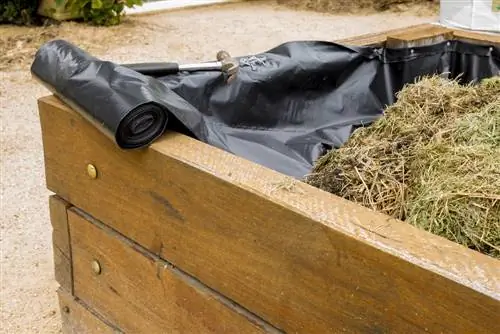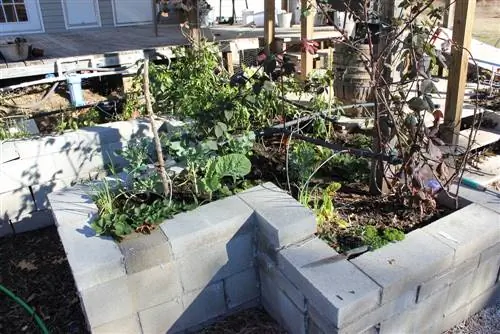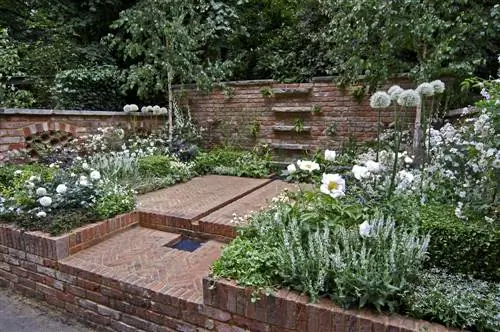- Author admin [email protected].
- Public 2023-12-16 16:46.
- Last modified 2025-01-23 11:21.
There are countless variations of raised beds made from very different materials, in different sizes and shapes, with or without a base. Since raised beds have become increasingly popular, resourceful gardeners and specialist retailers have come up with a lot of ideas to ensure that such a bed does not can only be placed in the natural garden. For balconies and terraces, for example, you should choose a raised bed that is closed at the bottom - otherwise it will flood the subsoil into which excess water cannot seep in.

Why should I choose a raised bed with a closed bottom?
A raised bed that is closed at the bottom is ideal for balconies and terraces as it does not flood the subsoil. Make sure there is good drainage, e.g. with drainage hoses, to avoid waterlogging and use simple soil instead of compost material in such raised beds.
Why a raised bed is usually always in contact with the ground
Conventional compost raised beds always have an open bottom and therefore contact with the ground for two main reasons:
- Excess water can drain away. Waterlogging can be prevented.
- Earthworms and other beneficial microorganisms migrate from the ground into the raised bed.
- They are indispensable for the successful composting of the filling material.
For both to work, the surface should be prepared accordingly before setting up the bed and filling it.
Raised bed closed at the bottom for balconies and terraces
Now open floors are not always possible: on the balcony, for example, with such a bed you are likely to quickly get into trouble with the landlord and the neighbors living below. For this reason, in such cases only raised beds that are closed at the bottom are possible, although there are many variations here too. The table beds, for example, are practical, although strictly speaking they are not classic raised beds. Nevertheless, they offer a comfortable working height and plenty of planting space. “Raised beds” can also be built in no time at all from discarded fruit and wine crates. While you always have to keep an eye on the statics of balcony beds, you can also set up larger and heavier raised beds on the terrace and on other surfaces.
Drainage for raised beds closed at the bottom
But whether on a balcony, terrace or somewhere else entirely: raised beds that are closed at the bottom definitely need good drainage so that excess water can flow away and the vegetable bed does not turn into a swampy landscape. But how do you do this if the closed floor no longer offers drainage? Here you can get creative and ensure water drainage in the following tried and tested ways:
- Drill the ground and attach drainage hoses.
- Take this to a collection container where you will catch any excess water.
- This can e.g. B. can still be used for casting.
- Place additional planters with holes in the raised bed box.
- Old laundry baskets, for example, are suitable for this.
- These are filled and planted.
- The actual raised bed box serves as a water collection container.
- Make sure that the planter (€4.00 on Amazon) is not directly in the water.
Tip
Raised beds with a shallow planting trough (such as table beds) are not suitable for composting due to their shallow depth. They can also simply be filled with soil instead.
Additional information on ergonomic gardening is compiled for you in this article.

